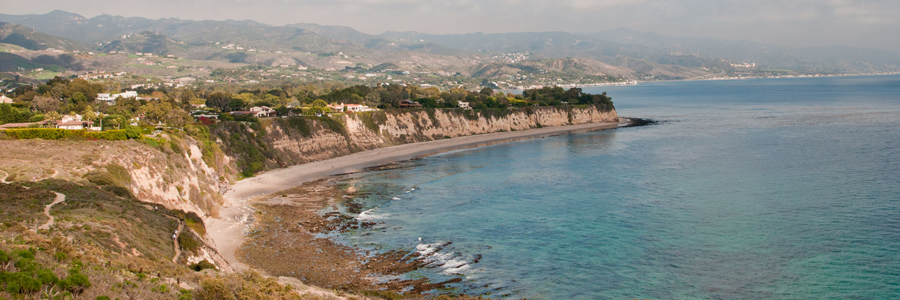How to Turn the Tide on Climate-Related Erosion

Climate change is real. We could lose two-thirds of our beaches in L.A. by 2100, writes Heal the Bay vice president Sarah Sikich.
As a surfer, scientist, and unabashed fan of romanticized sunset walks on the beach, my heart sunk as my news feed was blasted with a double whammy of bad beach news this week.
First, the White House declared war against the smart climate change policies enacted by the previous administration, which served to protect our communities and the economy. Second, the U.S. Geological Survey unveiled a report that projects that Southern California could lose up to two-thirds of its beaches by 2100 due to climate-related sea-level rise. We cannot afford to move backwards with climate policy when now, more than ever, public health and our environment need proactive solutions to mitigate against and adapt to negative impacts related to rising temperatures.
Los Angeles is known for its beaches. They fuel tourism in the region and provide Angelenos a place to breath, relax, and take in the horizon – offering a break from the buzz and stress of city life. But, these beaches also buffer our coastal communities from the incoming tide and pounding waves. With sea level rise projections of up to 6.5 feet by 2100, eroded beaches would give way to flooding in low-lying neighborhoods, such as Wilmington and Venice. Floods would do damage to coastal infrastructure, like PCH and water treatment plants, pump stations, and other structures that service our communities. A detailed report came out last month from USC Sea Grant that projects detailed impacts from sea level rise along the entire Los Angeles County coastline, and the projections are even starker with the new USGS study released this week.

Exposed bedrock on a beach near Santa Barbara. Daniel Hoover, U.S. Geological Survey
The best way to prepare our coastal communities is to invest in strong climate policy in two ways: mitigating the impacts of climate change by curbing emissions, and by buffering our built and natural environments through adaptation measures that help protect against climate change impacts already underway.
These measures work best when the natural environment is enhanced through measures like dune restoration, protecting and restoring kelp forests, and beach nourishment. And, as demonstrated by the USGS study, agency research is a critical part of the process. Unwinding climate policies and gutting budgets for EPA and NOAA — key agencies that invest in climate research and preparedness — will only leave us with our heads in the sand, drowning from the rising seas.
The good news is that research, planning, and management measures can be put into place to help curb the impacts from sea-level rise. But, the longer we wait, the more difficult it will be to take meaningful action. Now is the time to double down on efforts to prepare and defend our coastlines. Please join Heal the Bay and our supporters in making your voice heard by signing our petition calling for funds to be maintained for climate programs in both NOAA and EPA. More than 70,000 ocean lovers and science believers have joined the call. Please add your voice.
Some comments from our supporters around the nation:
“I’m signing because I believe in science. Climate change is real, and our planet is in peril.” – Andrea from Mill Valley, CA
“These cuts in funding are directly against our country’s and humanity’s best interests.” – Floyd from Anchorage, AK
“The EPA is indispensable – I want myself, my family, my community, my country and my planet to be protected!” – Meg from Salt Lake City, UT
“Any proposed reduction in funding for the EPA and NOAA will adversely affect the U.S.’s ability to combat climate change in ways that we cannot afford.” – Elizabeth from Dallas, TX


